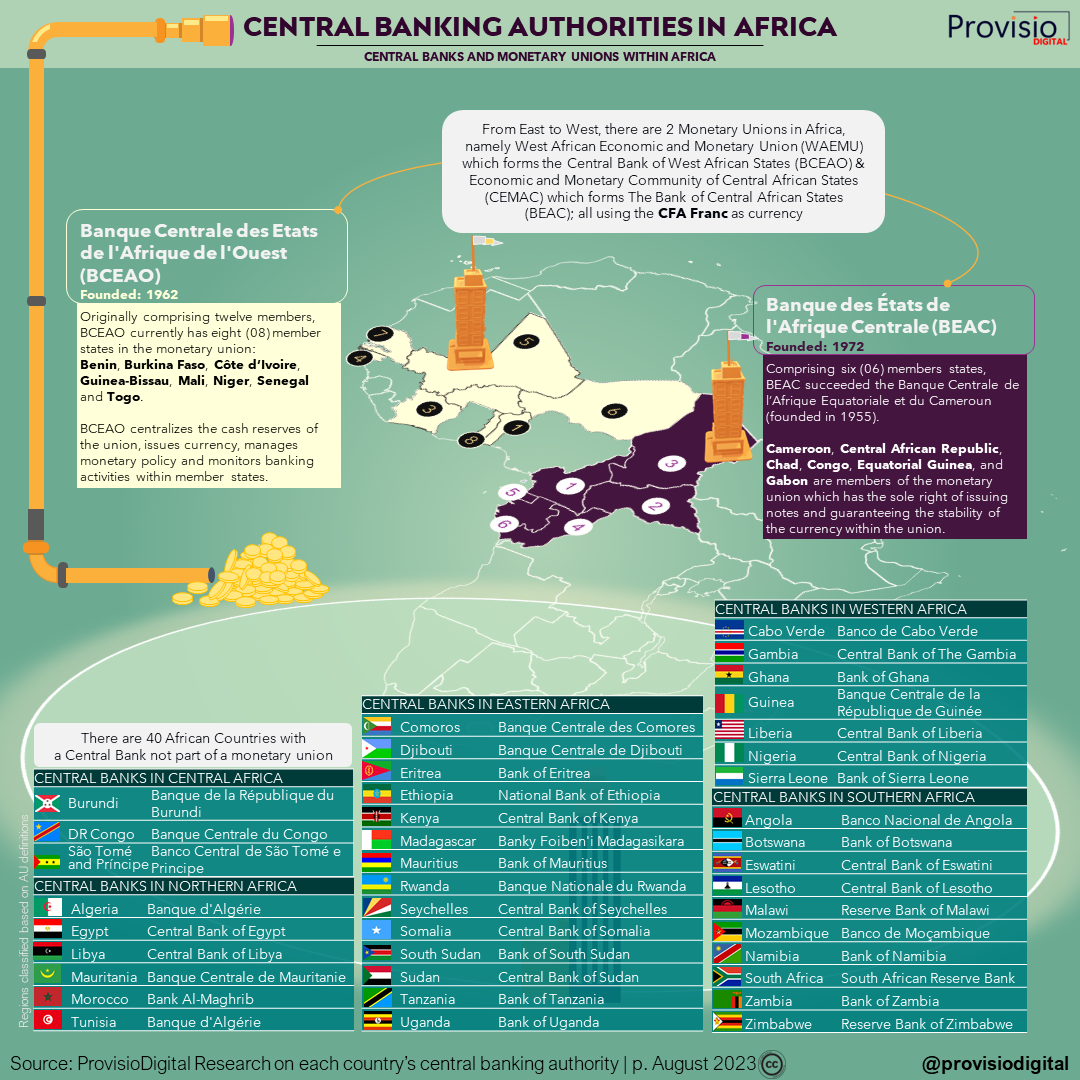Why We Looked Into This »?👀
|
The African continent is home to 40 Central Banks and 2 Monetary Unions, which serve as the apex financial institutions regulating all financial services within their respective countries. These institutions play crucial roles in managing monetary policy, issuance of currency, and overseeing banking activities, while providing support and assistance to member states.
The 40 Central Banks in Africa
The 40 Central Banks in Africa have a diverse naming convention, with 19 utilizing “Central Bank of,” 15 using “Bank of,” 3 opting for “Reserve Bank,” and 2 adopting “National Bank” to identify their roles. Notably, Southern African countries such as Malawi, South Africa, and Zimbabwe utilize “Reserve Bank,” while Eastern African countries, including Ethiopia and Rwanda, favor the name “National Bank”.
Morocco’s Bank Al-Maghrib (المغرب) represents a unique nomenclature, aligning with the literal meaning of the country’s official name, “The West” and can be interpreted as ‘Morocco’s (Central) Bank’.
This comprehensive framework illustrates the diverse nature of central banking across different regions of the African continent. It is essential to recognize the impact of recent governmental changes in member states, which may have implications for the future of these Monetary Unions.

Monetary Unions in Africa
In Africa, two prominent Monetary Unions, namely the West African Economic and Monetary Union (WAEMU) and the Economic and Monetary Community of Central African States (CEMAC), are represented by their corresponding central banks.
On one hand, the Central Bank of West African States (BCEAO) established in 1962, serves as the common issuing institution for member states of the West African Monetary Union (WAMU), including Benin, Burkina Faso, Cote d’Ivoire, Guinea Bissau, Mali, Niger, Senegal, and Togo. Located in Dakar, Senegal, BCEAO plays a vital role in centralizing cash reserves, managing monetary policy, and providing financial support to member states.
On the other hand, the Bank of Central African States (BEAC) founded in 1972 and headquartered in Yaounde, Cameroon, offers financial services to Central African countries forming the Economic and Monetary Community of Central African. Its members consist of Cameroon, Central African Republic, Chad, Equatorial Guinea, Gabon, and the Republic of Congo. BEAC holds similar responsibilities related to monetary policy, currency issuance, and facilitation of banking activities within its member states.

This work is licensed under a Creative Commons Attribution-NonCommercial 4.0 International License.


